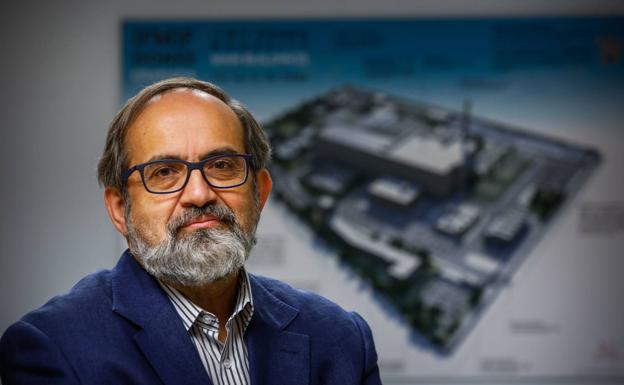Interview: Ángel Ibarra, Director of the IFMIF-DONES Consortium

Ángel Ibarra Sánchez, Director of the IFMIF-DONES Consortium, is Doctor in Physics by the Autonomous University of Madrid. For over 35 years, Ibarra has worked in different aspects related to the fusion technological challenges as a source of energy, with particular emphasis in materials and their reaction to radiation.
Head of the Fusion Technologies Division at the National Fusion Laboratory in CIEMAT, Ibarra has led for over 15 years the Spanish participation in the IFMIF/EVEDA project within the framework of the bilateral agreement between Europe and Japan for the Broader Approach to Fusion. Ibarra is the European coordinator of the Early Neutron Source work package (WPENS) for fusion in the framework of the EUROfusion European Consortium. Ibarra is also responsible for the DONES Preparatory Phase project.Ángel Ibarra has published more than 200 scientific articles in areas related to fusion technology and has been and is part of different national and international committees.
To place ourselves in the current situation of the IFMIF-DONES project, what is DONES Prep, which is now ending, and which are the next steps that will be taken?
The series of activities known as the DONES Preparatory Phase (DONES-PreP) were arranged as a Common Support Action funded by EURATOM from October 2019 until December 2021. The purpose of these actions was to prepare and promote the international discussion about IFMIF-DONES and lay the foundations for an international agreement for the commissioning of the project.
With this aim in mind, different activities have been developed, which can be organised into different lines of work. Firstly, the development of a series of studies and analyses necessary to propose a legal, governance and financial framework, acceptable by all parties. Secondly, a series of additional studies were conducted to describe in detail the licensing and permitting processes to which the facility will have to go through and fulfil. In addition, technical studies were implemented to evaluate technical alternatives that will allow an efficient use of the facility or its use in other scientific and technical fields. Finally, considering that Spain intends to use European Funds to partially finance Spain’s contribution, the requirements that must be met to be able to make use of these funds in this large-scale project were analysed.
As it is known, the project is reaching its end, and we will obtain the latest results in the next weeks. The next steps will focus on the analysis of the results obtained from the previously mentioned fields and implement the necessary actions to take them into consideration.
Positive reaction of the international scientific community and of strategic interest for the European scientific community
The project has been promoted in different international scientific congresses and with your participation recently as Director of the Consortium. Which has been the reaction of the international scientific community to the project and its development? Has it raised expectations?
To be precise, the project has been promoted in different types of national and international forums for a good number of years. One of my main tasks, currently as the Director of the IFMIF-DONES Consortium, and before also as the responsible of the DONES-PreP project and WPENS, is precisely to disseminate and promote the project as much as possible in the national and international scientific and technological community. This dissemination has been done with all the possible means that we have at our reach, including participating in international conferences, presenting the project in different international committees, using social networks, issuing a periodical newsletter, and running a website that is continuously updated.
Concerning the international scientific community, I think it is safe to say that its reaction has been and is very positive. In the recent years, the facility, and its exploitation, has been identified as one of the most important elements for the development of fusion as a source of energy, after its inclusion in the Fusion Roadmap developed in 2018. The facility was also catalogued as of strategic interest for the European scientific community and was included in the ESFRI Roadmap in 2018.
We have also developed in the past years a series of strong relations with scientific communities from fields other than fusion. For instance, the nuclear physics community has helped us in the identification of different types of experiments that could be conducted in IFMIF-DONES, not related to the necessities of future fusion reactors, but that can take advantage of the unique characteristics of this facility.
In this context, how is this positive progress being tackled and accepted by the public administration at regional, national, European levels and by the international political organizations?
It has been positively accepted in general. The public administration, at the local, regional, and national level, have shown a strong support to the project, making a significant budgetary effort to promote the candidacy. The Regional Government of Andalucía (Junta de Andalucía) and the Spanish Government recently signed an agreement for the creation of a Consortium (the IFMIF-DONES Consortium) that will be the entity in charge of managing Spain’s contribution to the project. This is a very significant step for the commissioning of the project.
In the international sphere, the obtained results are also positively appreciated and different actions are being taken to define an international agreement and organisational model that will allow the commissioning of the project in a relatively short period of time.
You recently participated at an event organised at the Chamber of Commerce of Granada about the opportunities in IFMIF-DONES. Which are these opportunities in the short and medium term for all who can benefit from this project, this is scientists, professionals from different fields, business from various sectors and the society?
It is hard to express in a few words the wide range of opportunities in the short, medium, and long term that a facility such as IFMIF-DONES presents for the business sector in Granada. Generally speaking, many other experiences in different European countries have shown that the construction of an important scientific facility has a significant impact in the local area in the long-term regarding employment, creation and establishment of new businesses, in the technological development of local companies and, in general, in the entire socioeconomic sphere.
The event organised at the Chamber of Commerce of Granada focused on informing about the activities that are currently being implemented by the IFMIF-DONES Consortium, the University of Granada and CIEMAT to boost the commissioning of the project. Particularly, the upcoming opportunities were presented. These mainly focus on the construction of some buildings in the area where IFMIF-DONES will be built, the manufacturing of important component prototypes and the commissioning of some laboratories, including significant experimental facilities.
The calls to the public procurements related to these activities are foreseen to be announced within a year from now.
IFMIF-DONES will have a gearing effect for research groups and companies working in technologies of interest for the project
Besides these opportunities, what other scientific and technological development actions in different fields can be performed in parallel as a result of the synergies that can take place in this large-scale facility?
Once again, it is difficult to put into few words what can happen in the future with a facility such as IFMIF-DONES. It will surely bring many surprises during its construction and exploitation, and this is particularly difficult when talking about the fields of science and technology outside the main objective of this facility, which is, as has been mentioned on many occasions, the development and qualification of the necessary materials for future fusion reactors.
Nevertheless, thanks to the work conducted in the Preparatory Phase project, we have already identified some areas for which this facility could be very important. For instance, in medicine, it seems that IFMIF-DONES gathers the unique conditions for the generation of radioisotopes for medical use that are currently very complex to obtain and are only generated in a few locations in the world. For example, in the field of industrial technology, the facility could be used to control the quality of complex components, the qualification of electronic devices, the characterization of the chemical composition of materials, etc. In the field of nuclear physics, it could be used for the development of experiments that cannot be done in other facilities.
On the other hand, it is likely for the facility to have a gearing effect for research groups and companies working in technologies of interest for the facility. In this line, for instance, the University of Granada has announced 15 research projects that include writing doctoral theses in topics related to IFMIF-DONES which were identified at a meeting a few months ago. Another interesting example is the idea that the University of Granada is considering of organising a Winter School in which courses about technologies related to IFMIF-DONES are taught. These examples of actions implemented before the official start of the project give an idea of the huge potential that a facility such as IFMIF-DONES can have as a gearing factor in the local socioeconomic context.
From the start of the project, there have been actions to promote the project not only in the scientific and professional sectors, but also in the society. How do you assess this initiative and what results have been obtained?
The dissemination of the project in the society is a crucial aspect of our work. Besides the scientific objectives of a facility like IFMIF-DONES, another important objective is to ensure that the society is familiar with the project, that they understand it and appreciate it. It is important for us to avoid giving the impression that the facility that we want to build is a machine with which some scientists are going to be entertained by doing experiments somehow incomprehensible.
From the beginning of the project, we have tried to develop activities to explain the objective of the project to the society, especially in the local area. To do so, we have tried to organise different events with professional associations, political authorities, with the public (as in the European Researchers’ Night), in schools and high schools, we have edited a short book about the world of the accelerators, we have prepared a video explaining the purpose of the project and the framework, etc.
I am very satisfied with the work carried out so far. I believe that we have managed to acquaint Granada with the project, and we have achieved its unanimous support, which is fundamental.
However, we should be aware that a continuous effort must be done and that we should continue working in this line. We are already planning specific actions for the upcoming months and years and, I hope, that they will be welcome by the society.

